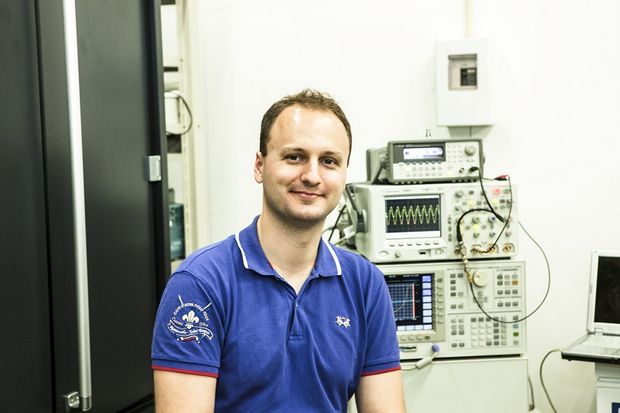Together with German researchers, JKU LIT scientist Martin Kaltenbrunner has developed a ground-breaking sensor.

Controlling and operating objects in a computer-generated virtual or augmented environment requires being able to accurately measure the position of a real hand. Whereas conventional systems are based on optics, the new sensor relies on magnetic effects. The advancement has now been presented in the journal "Science Advances".
Cameras are generally used to film hand movements and create an electronic version to be used in a virtual environment. One could also wear special gloves containing accelerometers or something similar. Either way, measuring the accuracy usually follows vague movements and cannot, for example, detect the movement of individual fingers.
The new sensor, however, is attached directly to the skin using a wafer-thin foil designed to measure the precise position and direction in an external magnetic field. Martin Kaltenbrunner (JKU LIT Soft Electronics Lab) explained, "It basically works like a compass.” In this case, so-called spin valves are used: special materials in which electrical conductivity depends on the direction of the magnetic moments (spins) of flowing electrons.
If the sensor is located in a permanent magnet field, the field’s strength can be used to detect the distance to the magnet and thus where it is in the room – an effect that the researchers were able to demonstrate a few years ago. A new version of the sensor can combine several spin valves to also detect where it is in the room. As an example, Kaltenbrunner and his colleagues held a demonstration controlling the brightness of a virtual light bulb by rotating a hand with a detector attached to it.
Martin Kaltenbrunner added, "We have only demonstrated this with a single sensor. You could also attach our sensors to each finger and capture the entire movement of a hand." External devices currently provide the power supply and evaluation using thin cables attached to the sensors. However, since measurements do not require much energy, the researchers believe that in the future it is possible to create both in the form of wearable technologies, such as a bracelet or armband.
At the moment, the sensors still need relatively strong magnetic fields and work only in close proximity to a permanent magnet. To improve the sensitivity, researchers want to develop sensors that would even work using the earth’s magnetic field. This would make it possible to detect hand movements in any position in the room and could be an important part of the finished product’s ‘user-friendly’ aspect.








